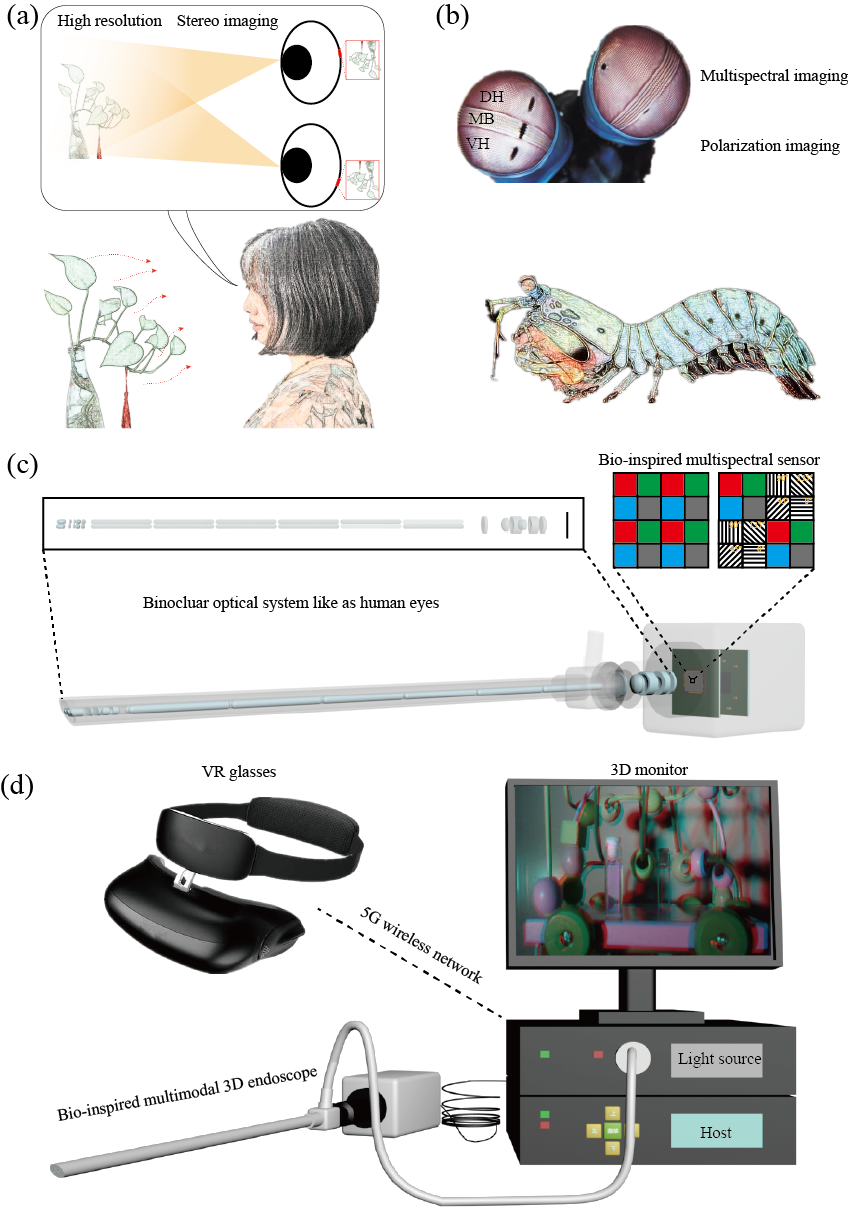Author: |
Editor: XU Jingqiu| Jan 13, 2021
Researchers of Changchun Institute of Optics, Fine Mechanics and Physics (CIOMP), Chinese Academy of Sciences, have developed a new medical endoscope which they say allows surgeons to see 3D images of the areas they are operating on while seeing the cancer tissues they need to remove highlighted in fluorescence at the same time.
The new endoscope is designed to directly replace existing endoscopes, which means doctors will not need to go through lengthy training. This means patients can expect to benefit from this new technology much sooner.
Florescence 3D endoscopes are not new, says Dr. SHI Chengyong, head researcher of the project, but he pointed out that his is the first to allow doctors to see fluorescence and 3D images at the same time, without having to pause and switch working mode.
The 3D imaging capability can help surgeons locate diseased tissues more easily and precisely, while the fluorescence imaging can highlight cancerous tissues for easier removal or healthy organs so doctors can better avoid them.
''Because our 3D endoscope can acquire visible and fluorescent 3D images simultaneously, it not only provides more visual information but can also greatly shorten the operation time and reduce risks during surgery,'' says Dr. SHI.
Dr. SHI and his team demonstrated their new multimodal endoscope in the OSA’s journal Optics Express, one of the top journals in the field of Optical science.
The new endoscope achieves high-resolution 3D imaging using two optical systems to form a binocular design much like that of human eyes. However, in this case, the optical design can accommodate both visible light like human eyes and the near-infrared wavelengths required for fluorescence imaging. This light is detected by a sensor inspired by the compound eyes of mantis shrimp, which not only detect multispectral information but also recognize polarized light. The sensor detects multiple parts of the electromagnetic spectrum by using pixels with different spectral and polarization responses.
Though it can be used for any endoscopic procedure, Dr. SHI revealed that this new endoscope is really designed for robotic surgery systems, which have been used by surgeons for added precision and accuracy in complicated operations in confined areas of the body.
Dr. SHI is confident that eventually robotic surgeries can be used for long-distance treatments. “Although today’s robotic surgical systems require the surgeon to be close by, robotic surgery based on this multimodal 3D endoscope might one day allow surgeons to remotely perform procedures in faraway locations. This could help solve the problem of uneven distribution of medical resources and benefit people who live in areas with relatively poor medical conditions.”

Schematic illustration of the bio-inspired multimodal 3D endoscope for color and near-infrared fluorescence image-guided surgery. (a) High-resolution and stereo imaging based on the features of the human eye vision system, (b) Multispectral imaging and polarization imaging of the mantis shrimp’s compound eye, (c) Exploded view of the bio-inspired multimodal 3D endoscope that consists of a binocular optical system like as human eye and a multiband sensor inspired by the mantis shrimp’s compound eye. (d) Panoramic view of the bio-inspired multimodal 3D endoscope system (Photo by CIOMP)
Author: SHI Chengyong
E-mail: shichengyong@ciomp.ac.cn
Article links: https://www.osapublishing.org/oe/fulltext.cfm?uri=oe-29-1-145&id=445024
